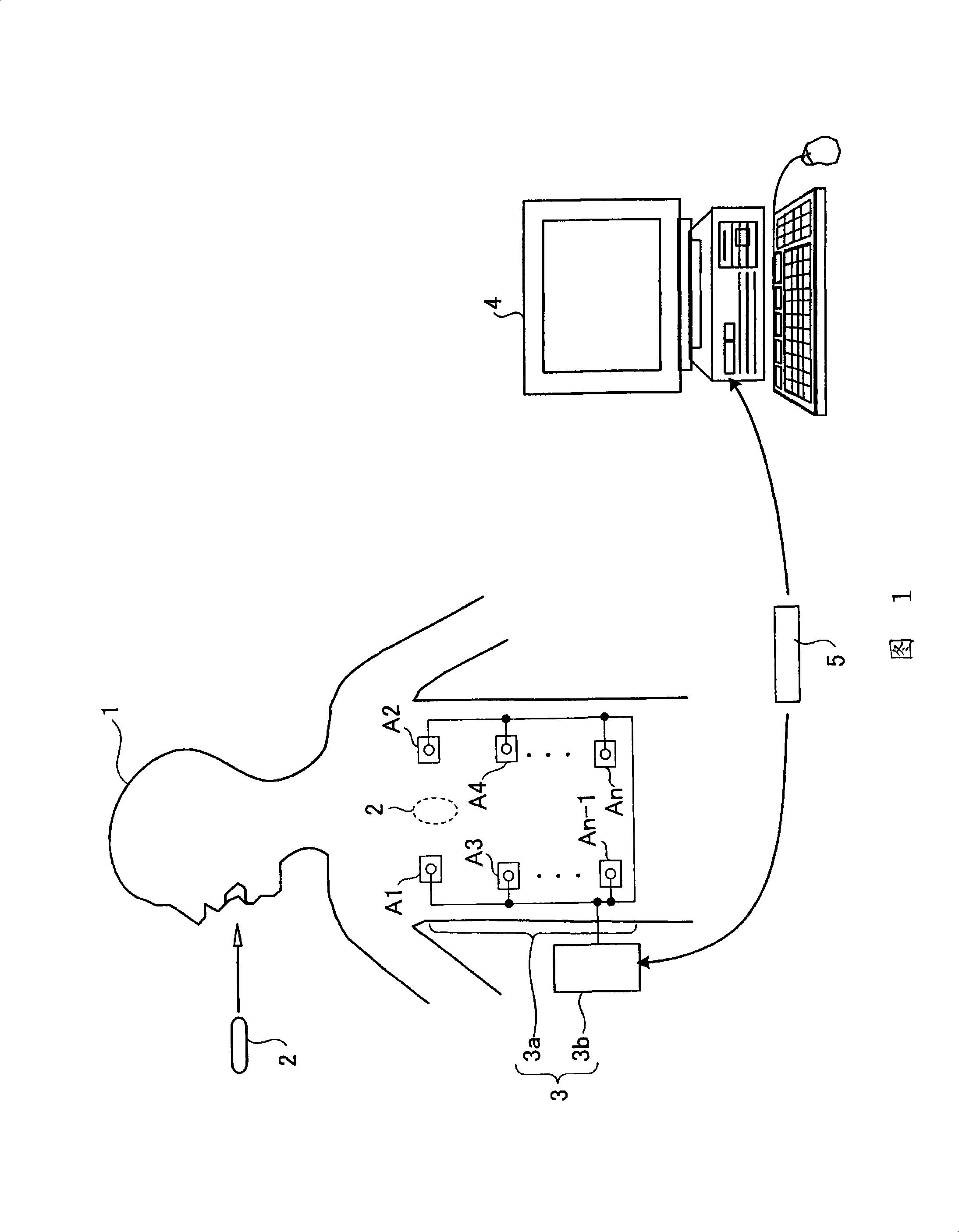Receiver apparatus and intra-subject information acquiring system
A technology of a receiving device and an object to be inspected, which is applied to closed-circuit television systems, in-vivo radio detectors, components of television systems, etc. The effect of preventing capacity
- Summary
- Abstract
- Description
- Claims
- Application Information
AI Technical Summary
Problems solved by technology
Method used
Image
Examples
Embodiment approach 1
[0045] FIG. 1 is a schematic diagram showing an overall configuration of a wireless in-vivo information acquisition system including a receiving device according to the first embodiment. In FIG. 1 , the in-body information acquisition system includes: a capsule endoscope 2 that is introduced into the body of a subject 1, captures images in the body cavity, and transmits data such as image signals to a receiving device 3; and a receiving device 3 , which has a wireless receiving function. In addition, the in-body information acquisition system includes: a display device 4 for displaying images in the body cavity based on wireless signals received by the receiving device 3; and a portable recording medium 5 for performing communication between the receiving device 3 and the display device data transmission. The receiving device 3 includes an antenna group 3a, and an external device 3b that performs processing, etc., of radio signals received by the antenna group 3a.
[0046] T...
Embodiment approach 2
[0092] Next, Embodiment 2 will be described. FIG. 13 is a schematic block diagram showing the overall configuration of the receiving device 203 according to the second embodiment. The reception device 203 shown in FIG. 13 is compared with the reception device 3 shown in FIG. 2 in that the structures of the image deletion control unit 36a and the image deletion control unit 336a are different, and the other structures are the same as the reception device 3, and the same components are added with The same reference number.
[0093] Here, refer to Figure 14 The flow chart shown is used to describe the image deletion control processing procedure of the image deletion control unit 336a according to the second embodiment. First, the image deletion control unit 336a acquires the detection pulse signal Hd of the horizontal synchronization signal (step S302). Thereafter, the image deletion control unit 336a judges whether or not the horizontal synchronization signal detection unit ...
Embodiment approach 3
[0097] Next, Embodiment 3 will be described. FIG. 15 is a schematic block diagram showing the overall configuration of the receiving device 303 according to Embodiment 3. As shown in FIG. The receiving device 303 shown in FIG. 15 is compared with the receiving device 3 shown in FIG. 2 in that the structure of the image deletion control part 36a and the image deletion control part 436a are different, and other structures are the same as the receiving device 3, and the same structure is added Reference sign.
[0098] Here, refer to Figure 16 The flow chart shown is used to explain the image deletion control processing procedure of the image deletion control unit 436a. First, the image deletion control unit 436a acquires the detection pulse signal Hd of the horizontal synchronization signal (step S402). Thereafter, the image deletion control unit 436a determines whether or not the horizontal synchronization signal detection unit 236 can detect a predetermined number or more o...
PUM
 Login to View More
Login to View More Abstract
Description
Claims
Application Information
 Login to View More
Login to View More - R&D
- Intellectual Property
- Life Sciences
- Materials
- Tech Scout
- Unparalleled Data Quality
- Higher Quality Content
- 60% Fewer Hallucinations
Browse by: Latest US Patents, China's latest patents, Technical Efficacy Thesaurus, Application Domain, Technology Topic, Popular Technical Reports.
© 2025 PatSnap. All rights reserved.Legal|Privacy policy|Modern Slavery Act Transparency Statement|Sitemap|About US| Contact US: help@patsnap.com



